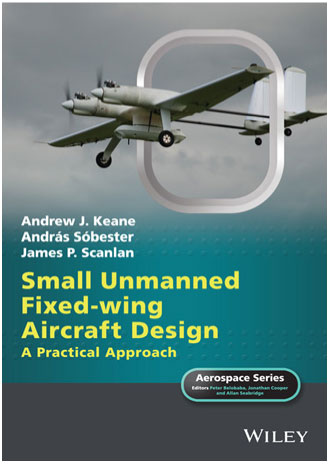
This new volume from research at the University of Southampton is aimed at students, researchers and businesses looking to develop a small- to medium-sized unmanned aerial vehicle (UAV) (up to 20kg all up weight). The authors have considerable experience producing a range of different UAVs (mainly fixed-wing), and these experiences are used as case studies and examples in the various chapters.
The book provides an overview of the whole design and development process from initial concept generation through to final testing. It emphasises that the real skill of a designer is in the synthesis and analysis performed during this process.
The authors do a good job of explaining what the key differences are in the approach to designing a crewed and un-crewed aircraft and how this leads to greater potential flexibility in UAV concepts. The design ethos detailed is to focus upon making a UAV easily mass producible with a minimum of skill required for final assembly. To this end, they make extensive use of manufacturing technologies such as 3D printing, CNC foam cutting and laser cutting. Inevitably this comes at some cost in increased airframe weight and, therefore, reduced payload carrying capability, but it does simplify construction and allow for complex multi-purpose parts (for example, built in fuel tanks as part of the wing structure or parts with built in hinges and connections).
The authors stress the importance of the undercarriage design, a point often overlooked in UAV design; this forms a large percentage of the weight of the aircraft and can have significant shock loads applied to it.
Sometimes the book becomes very text dense, and more and larger diagrams within the book could have been included for clarity, but the overall presentation is good, and the layout is logical.
There are chapters covering key analysis and optimisation tasks such as constraint analysis (using Python), analysis of lift to drag performance and stability using the freely downloadable XFLR5 software and structural analysis using Abaqus. Potential UAV developers will find this information invaluable during the design process. Parametric computer-aided design and wind-tunnel testing is also covered in some detail.
It is heartening to see that the authors have listed their failures as well as successes during testing, as these instances often prove invaluable in increasing the chances of success of future designs.
Overall, a well-thought-out and well-written book with a large scope from experienced UAV developers that will provide a good reference and useful tools for those looking to create a UAV aircraft.




